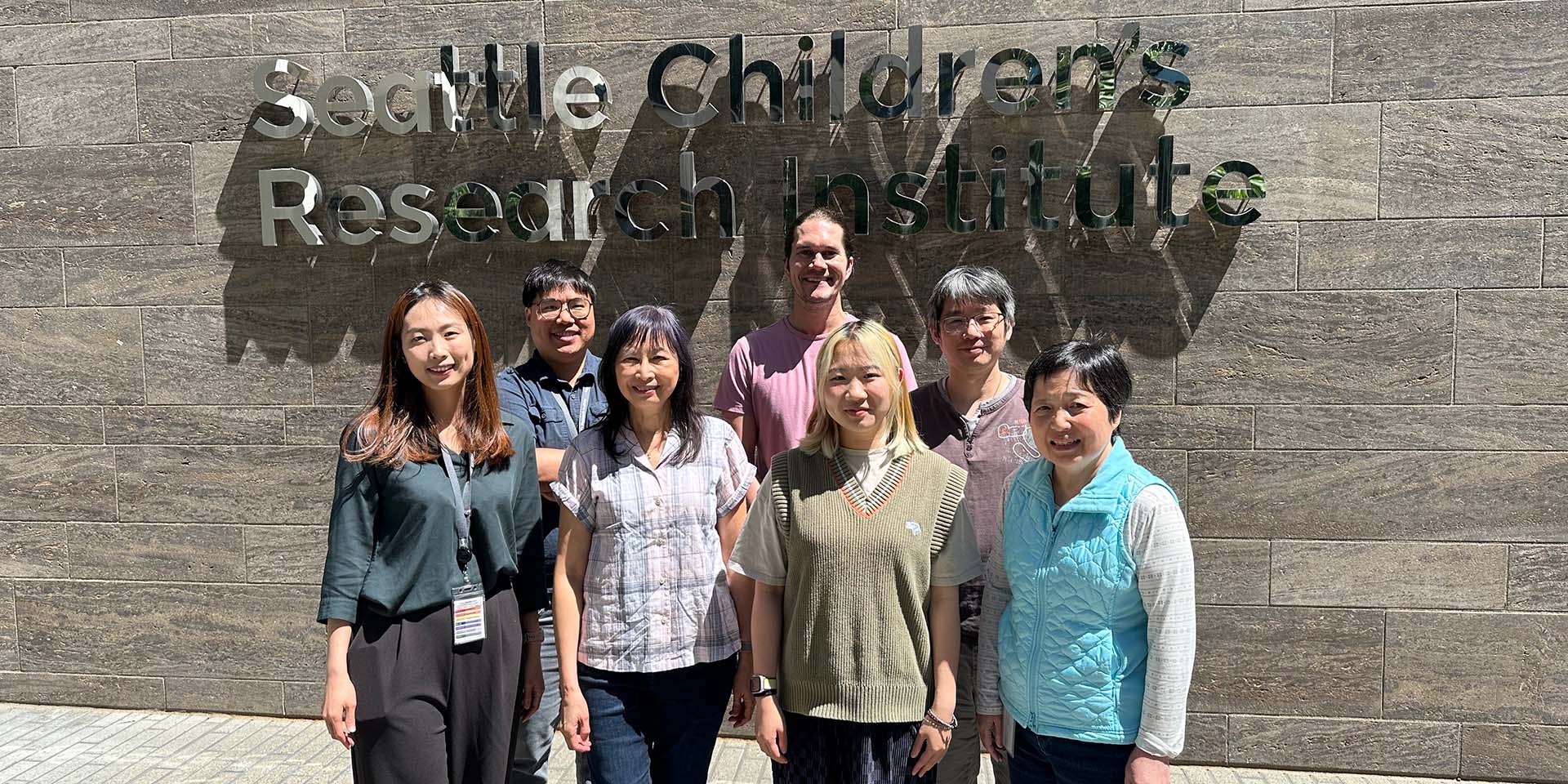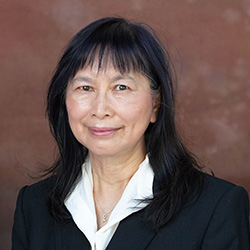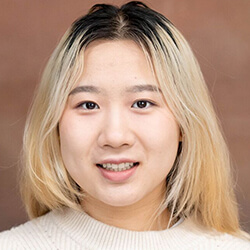
Miao Lab
Developing innovative hemophilia treatments
The Miao Lab is currently pursuing research focused on the development of better treatment for people with hemophilia and other genetic diseases. In order to achieve this goal, we have dedicated our effort to develop safer and more efficient gene therapy approaches; and immunomodulation strategies to regulate inhibitory antibody responses against replacement genes/proteins.
The Miao Lab is the first one to demonstrate that delivery of factor VIII and factor IX plasmids using nonviral approaches achieved long-term therapeutic effect in diseased mice. We also showed that regulatory T cells play a crucial role in regulating immune responses to these coagulation factors following either protein or gene therapy.
Based on these novel findings, we are now investigating several potentially clinically translatable approaches for treatment for genetic diseases. The goal is to develop safe and more effective treatment protocols and regimens to achieve long-term therapeutic effect.
Current major research programs include the development of: novel nonviral gene delivery technologies including ultrasound-mediated gene delivery (UMGD), lipid nanoparticles (LNPs) and virus like particles (VLPs); intraosseous delivery of lentiviral vectors targeting HSC- or platelet-specific gene expression; gene editing technology; immunomodulation strategies involving immunosuppressive regimens and adoptive regulatory T cell therapy; study of the impact of glycosylation on inhibitory antibody formation.
These studies will facilitate the translation of new successful gene therapy and immunomodulation strategies to clinical treatment for hemophilia and other genetic diseases.
Explore Our Research
The Miao Lab is currently focused on the development of better treatment for genetic diseases using hemophilia as our model disease. To achieve this goal, we have dedicated our efforts to develop safer and more efficient gene therapy approaches; and immunomodulation strategies to regulate inhibitory antibody responses against replacement genes/proteins.
Ultrasound-mediated gene delivery (UMGD)
Although viral gene therapy had success in animal models and recent clinical trials, many obstacles remain. In comparison to viral gene transfer, nonviral delivery of DNA or RNA elicits reduced immune responses and toxicity, prevents random integration into the host genome, and allows for repeated treatment. In addition, the DNA/RNA cargoes are relatively easier to prepare and more cost-effective.
Previously we demonstrated that ultrasound mediated gene therapy method can significantly enhance reporter gene transfer into the animal model’s livers. Significantly, we have recently achieved therapeutic levels of factor VIII (FVIII) following UMGD into hemophilia A animal models.
In order to facilitate the eventual translation of these technologies into human application, we have developed ultrasound systems and new generations of transducers to successfully apply ultrasound technology for treating large tissue volumes in large animal models including dog and pigs. Recently, we have also synthesized and screened for the best custom-made, targeted microbubbles to further improve gene transfer efficiency.
These projects will facilitate the translation of this novel technology into human application, and could change fundamentally the way hemophilia patients are treated, with better patient outcomes. We would like to explore the possibility of clinical trial using this new technology.
Lipid nanoparticles (LNPs)-mediated gene therapy
Another successful nonviral approach we explored recently is to treat hemophilia A using factor VIII mRNA LNPs. Recently, we have successfully transferred repeated doses of LNPs encapsulated factor VIII mRNA into the hemophilia A animal model livers to obtain persistent factor VIII expression. We also combined the LNP delivery tools with CRISPR/Cas9 gene editing technology including prime editing and base editing to develop a new strategy to achieve long-term correction of hemophilia A.
Virus-like particles (VLP)-mediated gene therapy
VLPs mimic the structure of a native virus but lack the genetic material to replicate so that it can package and deliver gene or protein cargoes to target cells while avoiding the risks associated with viruses or viral vectors.
Our lab uses VLPs to package ribonucleoproteins (RNPs) coding for CRISPR/Cas9 proteins and its guide RNA or other gene editing tools to facilitate gene editing to correct factor VIII variants discovered in people with hemophilia. VLPs can also be combined with other nonviral gene deliver method such as UMGD to achieve safe, efficient and targeted delivery into desired cell/tissue types.
Gene editing technology
Correction of gene variants in the chromosome could provide a permanent cure for people who suffer from genetic diseases. Targeted gene editing using programmable nucleases CRISPR/Cas9 system have been developed. This system consists of Cas9 endonuclease and a sgRNA to create double strand breaks (DSBs) in specific targeting site.
We have reported that by delivering CRISPR/Cas9 and appropriate guide RNA by LNPs, we can repair a specific insertion deletion (Indel) FVIII variant in animal models. Furthermore, large gene deletions including I22I in FVIII gene occurred in 40-50% of the severe HemA patients can be repaired through homology-independent targeted integration (HITI) or homology-mediated end-joining (HMEJ)-based repair via DSB, or long-offset paired nicking target Integration (LOTI)-based repair via DNA nicking using a double-stranded DNA template.
In addition, ~10% of the severe HemA patients harbors single point missense mutations. Recently developed base editor and prime editor harboring the CRISPR nickase activity can efficiently repair single point mutations without DSB, therefore significantly decreasing the off-target effects.
Our lab is currently pursuing the development of new gene editing tools to treat different FVIII variants combined with our nonviral delivery method to achieve the goal to precise the correction of various FVIII variants.
Lentiviral gene therapy for hemophilia
Intraosseous (IO) infusion of lentiviral vectors (LVs) for in situ gene transfer into bone marrow may avoid specific challenges posed by ex vivo gene delivery, including, in particular, the requirement of pre-conditioning.
We have successfully transduced a high percentage of primitive hematopoietic stem cells (HSCs) in bone marrow following IO delivery of high-titer LVs. Furthermore, by IO delivery of G-F8-LV encoding a factor VIII (FVIII) transgene directed by a platelet-specific, glycoprotein-1bα promoter, we achieved long-term platelet-specific expression of FVIII, resulting in partial correction of hemophilia A. Similar clinical benefit with G-F8-LV was achieved in animals with pre-existing anti-FVIII inhibitors.
These findings further support platelets as an ideal FVIII delivery vehicle, as FVIII, stored in α-granules, is protected from neutralizing antibodies and, during bleeding, activated platelets locally excrete FVIII to promote clot formation. Overall, a single IO infusion of G-F8-LV was sufficient to correct hemophilia phenotype for long term.
We are currently improving further the constructs and delivery protocols. We would like to push this new methodology for clinical trials in the near future.
Drug and cell immunotherapy for modulating immune responses following gene and protein replacement therapy
30% of the hemophilia A patients develop inhibitor antibodies against factor VIII following protein replacement therapy. Current tolerance induction protocol involves long time administration of high doses of factor VIII, which is both inconvenient and very costly. One third of the patients fail to induce tolerance using this protocol. Prophylactic tolerance induction protocols involving a short immunosuppressive regimen with minimum side effects and toxicity are highly promising strategies for patients at high risk.
Our lab has developed several potent immunotherapies to prevent inhibitory antibody production in hemophilia A animal models, including agents to block costimulatory pathways such as CTLA4-Ig combined with anti-CD40L, and anti-ICOS, agents to deplete T cells such as anti-CD3, or agents to induce Treg cell expansion such as IL2-IL2mAb complexes, which can be administered in combination with repeated injections of low doses of FVIII to induce long-term tolerance of FVIII.
These new transient immunosuppression strategies for tolerance induction can not only reduce the costs, but also shorten the treatment time and increase the success rate. Clinical testing of some of these regimens is highly anticipated.
In addition, it has recently been demonstrated that CD4+CD25+Foxp3+ regulatory T (Treg) cells play a critical role in the regulation and suppression of autoimmune and alloimmune responses. Our preliminary data showed that an adoptive transfer of transgenic CD4+Foxp3+ regulatory T (Treg) cells significantly reduced anti-FVIII antibody titers in FVIII plasmid-treated HemA animal models. Thus, we have embarked on regulatory T cell therapy projects, including in vitro expansion of antigen-specific Treg cells, gene editing technology in collaboration with other investigators in our Center, as well as Chimeric antigen receptor (CAR)-Treg cell therapy for antigen-specific regulation of FVIII-specific immune responses.
Mechanistic study and immunomodulation of inhibitory antibodies against factor VIII
Almost 30% of the hemophilia A patients develop anti-FVIII inhibitory antibodies following protein replacement therapy. In order to ensure the success of either protein or gene therapy, it is significant to develop effective therapies to induce long-term tolerance to factor VIII.
My lab has investigated the development of immunomodulation strategies involving immunosuppressive regimens and adoptive regulatory T cell therapy for treating inhibitory antibodies following gene or protein replacement therapy. These strategies include immunosuppressive regimens using monoclonal antibody therapies, adoptive antigen-specific regulatory T cells therapy, and in vivo expansion of regulatory T cells, aiming at inducing long-term FVIII-specific tolerance.
Furthermore, in participation of a NIH U54 program of understanding the basic mechanism of factor inhibitor formation, we investigated the impact of cellular glycosylation on inhibitor formation to factor VIII in hemophilia and defines the specific immunologic trigger by glycosylation and its associated mechanisms.
Partnership Opportunities

Carol H Miao, PhD
Carol Miao, PhD, is a principal investigator in the Center for Immunity and Immunotherapies at Seattle Children’s Research Institute and a professor in the Department of Pediatrics at the University of Washington.
-

Xiaohe Cai, MD, MS
Research Scientist I
-
TingYen (Scott) Chao
Research Scientist I
-

Chun-Yu Chen, PhD
Postdoctoral Scholar
-

Meng Ni Fan
Research Scientist II
-

Ellen Xu
Research Scientist I
-

Feng Zhang
Visiting Faculty
